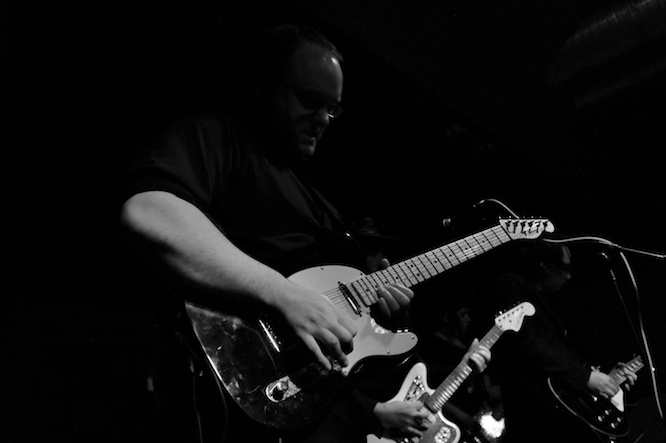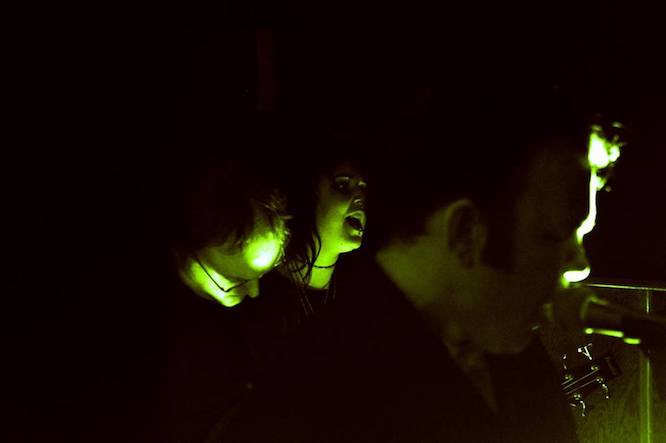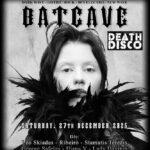Review of The Infancy Gospels EP
Disjecta Membra
By Ed Shorrock
A family tree showing Disjecta Membra’s bands members over the years would come out in a pretty weird shape. Starting and stopping abruptly in some places, growing and re-appearing in others and probably be about as wide as it would be tall.
That also makes it a near impossibility for anyone attempting to analyse Disjecta Membra’s musical style (why do people do that?) in any coherent fashion. The self-released ‘Theta Sessions’ EP in 1996 and the seminal ‘Achromaticia’ album in 1997 undoubtedly set the tone for the band. You can’t record a track like ‘Cauldron of Cerridwen’ and not attract the tag of ‘goth’. Organs, all-embracing synth, big theatrics, wiry guitar and baritone vocals tend to end up with people forming those kind of conclusions however one might think these labels are of limited value. Reviews which reflect the self-confessed influences of Bauhaus and The Banshees also bolster that assessment.
But to my ear Disjecta Membra’s ‘Achromaticia’ already had the potential to take one of many different routes stylistically. It did not fit neatly into any one of the myriad of sub-categories (admittedly multiplied by the industry in more recent years for marketing purposes) and left open the door. Fact though, as they say, is stranger than fiction. The next fifteen or so years, even during the hiatus of 2001-2009 which saw the occasional performance, saw a remarkable number of influences have their effect on Michel Rowland.
Words like ‘neofolk’, ‘classical’, ‘swampy blues’ and ‘folk-noir’ popped up during this period. Oh yes, and a cover of Motorhead’s ‘Ace of Spades’.
It also coincided with experimentation with traditional Māori language and sounds…..of which more later.
More recent ventures, following the band’s twentieth anniversary in December 2013 saw a supporting role with Pete Murphy, shows with Peter Hook and, most recently support for The Mission. It was ahead of these last dates that The Infancy Gospels EP was released.
Surely this is a review of that EP, not a history lesson though? The Infancy Gospels needs the historical context to explain why and what it is. Jumping in, in November 2016 without the back story would not do it justice. Admittedly the précis above is just that, but it sheds a few rays of light on some of the turbulence and forces which have affected this New Zealand outfit, some might say far from the centre of what is traditionally viewed as the centre of goth, but still burning brightly with Michel Rowland at its head.
And so to the EP……
A five song, 24 minute EP sounds like a pretty straightforward affair. Press play and expect to hear what the label given to the band should sound like. Except it doesn’t, and that is where the various musical meanderings of Disjecta Membra are on display. This EP is a real kaleidoscope of influences but the track listing gives you a hint of what is to come: Whakataurangi Ake, The Infancy Gospels, Lilītu, Cernunnos and Madeleine! Madelaine! (vox ii). The EP is actually called ‘The Infancy Gospels according to Disjecta Membra’ which identifies the highly personal touch Michel and his fellow musicians have given to this work.
If you’re looking for goth ‘n’ roll or traditional gothic rock, this is not going to be a stepping off point. However, for those who want to expand their horizons and have a music refresher, this is an intriguing set of songs. A nod to the beautiful artwork on the cover too.
First up, Whakataurangi Ake – as the name would suggest to those with even a passing knowledge of New Zealand culture, this has a traditional Māori song as a background. Starting with deeply reverberating sonics and haunting traditional instruments, this track speaks to the earth, or rather the earth speaks to us. The keys in the background give it a slightly more contemporary feel but that is the only acknowledgement of a modern influence until we reach the end when a feedback-like guitar sound kicks in and we switch seamlessly into the title track – The Infancy Gospels.
A rhythmic, echoing drumming sets up the number with what can only be termed ‘swampy blues’ (see earlier) taking over – first with one guitar and then another. A slow, mean, deliberate pace settles down. “Lord have mercy on my makeshift soul” sings Michel as the blues, accompanied by feedback and what I can only term ‘messy blues solos’ punctuate the more staid traditional blues chord progressions. This song has undoubtedly religious connotations dealing with themes of descent and redemption. It is a novel dark twist on your run-of-the-mill blues.
The pace so far has been slow, moody and menacing and with a track like Lilītu the expectation is that should continue. Not a bit of it.
Lilītu is the counterpoint to what we have heard before. A shorter punchy number with two duelling, screeching guitars almost punk-like in their delivery. The vocals though bring us back down to ground. In a weird way I heard The Cardiacs in this number – a slightly anarchic arrangement. There is a natural break in the track where the guitars stop and a driving bass has the EP all to its own, denoting a change in attack when the guitars come back with a more aggressive tone – decidedly more rock-orientated here. A lively, energetic song which appeals to the more traditional end of the goth spectrum, even if a little more punk. I have heard the term ‘angular-punk’ – seems to fit here.
Cernunnos, the Celtic god of fertility and the underworld amongst other titles he holds, is the penultimate track. An acoustic opening with soft bass does have a western feel about it – I almost thought it was going to break into the Animals’ House of the Rising Sun. It has that feel about it but a bigger, more expansive manner. Michel’s vocals suit this track down to the ground and the guitar solos act as delightful complements to the backbone of the song.
And to end, a familiar tune but with an updated take on the vocals. It is one of the more commercial numbers but no less appealing. Unapologetic fat bass synth at the beginning and guitars with a lighter synth providing the melody to the track. I could almost hear Ariel Maniki and the Black Haloes in this – at least I could imagine them performing it. A lighter, less intense song to finish the EP leaves us with a delightful sound ringing in the ears and wondering how we got, in the space of three tracks from Māori resonance to a dark club synth number. Better listen to it again to find out.
This EP is a deliciously eclectic mix of sounds from the dark side of the tracks, much like the band’s history and well worth exploring, even just as a taster for the earlier works if unfamiliar with Disjecta Membra’s back catalogue.
Ed Shorrock











